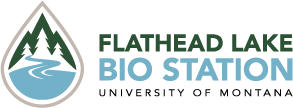UM Bio Station to Unveil Innovative New Wastewater Treatment Plant at Open House Celebration
The University of Montana’s Flathead Lake Biological Station (FLBS) will publicly unveil and provide information about its new modular and expandable Membrane Bio-Reactor wastewater treatment plant during its annual Open House celebration at 11:30am on Friday, August 8.
The unveiling will begin with a presentation by FLBS director Jim Elser, followed by a ribbon-cutting ceremony and informative session to allow visitors to see the new wastewater treatment plant’s processes and functionality. The unveiling will end with a brief question-and-answer session.
“At FLBS we don’t just study phosphorus, we have taken responsibility for our own wastes ever since we built that demonstration plant in the 1970s,” said FLBS director Jim Elser, who recently co-authored a book about phosphorus sustainability. “Now we are taking the next step to modernize and to demonstrate that effective phosphorus removal can be accomplished at smaller scales to meet new pressures in expanding rural areas like the Flathead.”
Flathead Lake began showing signs of water quality deterioration back in the late-1960s and early 1970s. Working with partners that included the Environmental Protection Agency (EPA), the Montana Department of Environmental Quality, and the Confederated Salish and Kootenai Tribes, Bio Station scientists determined that this water quality deterioration was the direct result of human inputs of the nutrient phosphorus.
In the mid-1970s, the Bio Station received funding from the EPA to construct a demonstration wastewater treatment plant to prove that removal of phosphorus to low levels was possible. The sequencing batch reactor plant was state-of-the-art for the era, and the first tertiary treatment plant in the Flathead Watershed.
After demonstrating the plant’s success, other wastewater treatment plants in the Flathead were upgraded to make them capable of modern phosphorus removal, and Flathead Lake water quality has remained outstanding ever since. Data from the Bio Station’s long-term monitoring program shows phosphorus levels in Flathead Lake have been stable, or perhaps even decreasing, over the past forty-plus years. The evidence is clear that investment in innovative wastewater treatment technology—in addition to the banning of phosphorus detergents and other phosphorus reduction efforts—worked.
But as innovative as the 1970s wastewater treatment plant was at FLBS, it was only designed to be effective for 20 years.
In 2015, FLBS began working with the University of Montana and the State of Montana to replace the aging system, which was kept operational by its diligent staff. A preliminary engineering study was conducted to explore replacement options. While a number of options existed, everything from implementing a giant septic system to repairing the existing plant, the Bio Station once again looked to the future with modern and cutting-edge technology.
Ultimately, FLBS decided to implement Membrane Bio-Reactor treatment technology—the same used in most modern municipal wastewater treatment plants, including those in Whitefish, Bigfork, and Polson. Unlike these municipal plants, however, the technology for the Bio Station’s plant is modular and arrived pre-assembled in shipping containers.
This “containerized package plant” approach provides benefits that are well-suited for the Flathead in two notable ways.
First, the package plants are more cost effective. The total costs for the implementation of the Bio Station’s new containerized plant was roughly $2.1M. A traditional plant would’ve cost upwards of $10M.
Second, the package plants provide an option of scalability. For example, if the Bio Station (or a local community using a similar plant) were to grow significantly, additional treatment technology and capacity could be added through the addition of more pre-assembled containers at an affordable cost.
These benefits, in concert with the package plant’s demonstrated effectiveness of continued phosphorus removal to low levels, may once again provide local communities with a blueprint for wastewater treatment innovation to protect the world-renowned pristine waters of the Flathead Watershed.
Given the increases in development and population in the Flathead, treating waste has become a pivotal challenge, both to provide for growing housing demand and to continue to protect our beloved waters, which are a primary driver of local economies.
Containerized package wastewater treatment plants could provide smaller, rapidly growing communities an affordable, scalable, and effective wastewater treatment option. Additionally, new developments and communities could also use the package plant technology to treat wastewater, as opposed to relying on septic systems that can lose nutrients to groundwater or to routing sewage or septage to the existing municipal wastewater treatment plants, which are currently maxed out due to growth since they were constructed.


